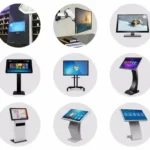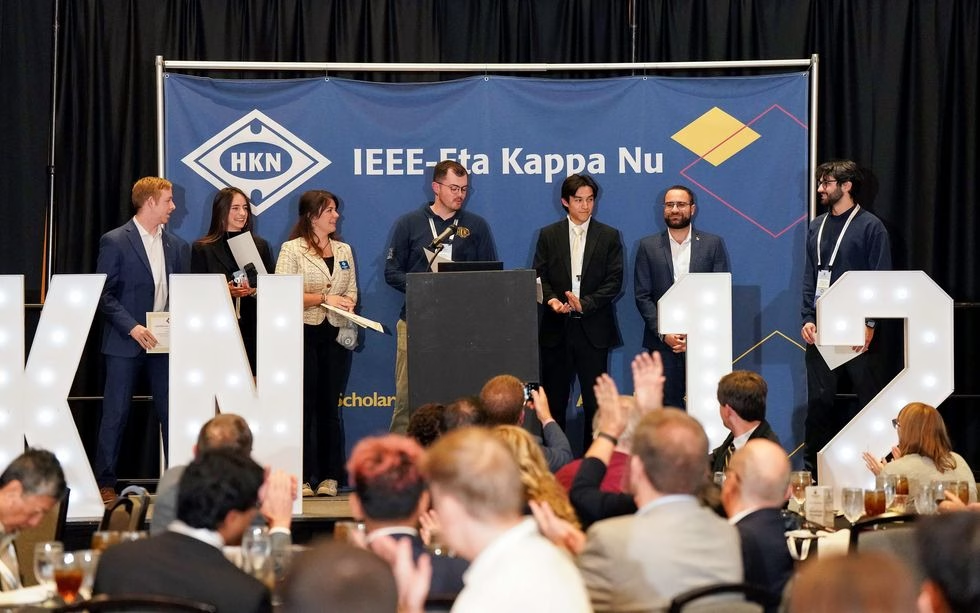Understanding Sustainability: A Comprehensive Guide

Sustainability: Embracing Eco-Friendly Innovations for a Greener Future
Introduction to Sustainability in Technology
In the increasingly eco-conscious landscape of the modern world, sustainability has transitioned from a mere buzzword to a crucial operational framework that encompasses various aspects of technology and software development. At its core, sustainability refers to the capacity to fulfill the needs of the present without compromising the ability of future generations to meet their own needs. This principle finds particularly relevant applications in IT and software development, where the focus is shifting towards integrating eco-friendly innovations and practices that promote long-term environmental stewardship. By embracing sustainable practices, organizations can not only comply with regulatory demands but also drive operational efficiencies, reduce costs, and enhance brand loyalty among consumers who prioritize environmental responsibility.
The Importance of Sustainable Practices
Today, organizations across all sectors are recognizing the pressing need to adopt sustainability as a fundamental component of their operational ethos. This shift is driven by growing environmental concerns, consumer demand for accountability, and the realization that sustainable practices can lead to true innovation and enhanced competitiveness. Implementing sustainable practices in IT involves evaluating the entire lifecycle of technology solutions, from design to disposal, ensuring that resources are used responsibly and waste is minimized. The significance of sustainable practices cannot be overstated: businesses that prioritize sustainability not only safeguard the environment but also stand to gain a competitive advantage through cost savings, improved customer satisfaction, and increased market share, as eco-conscious consumers gravitate towards brands that align with their values.
How IT and Software Development Can Drive Sustainability
The intersection of technology and sustainability presents a transformative opportunity to create eco-friendly solutions that address pressing environmental challenges. IT and software development can drive sustainability through multiple avenues, including optimizing processes, reducing energy consumption, and leveraging renewable energy sources. For instance, cloud computing solutions, when implemented effectively, can enable energy-efficient operations by capitalizing on shared resources, reducing redundant physical infrastructure, and allowing businesses to scale sustainably. Moreover, advancements in artificial intelligence and machine learning can facilitate smarter decision-making processes that ultimately lead to reduced waste and better resource management. By harnessing these innovative technologies, organizations can position themselves as leaders in sustainability while simultaneously reaping the economic benefits associated with responsible practices.
Circular Economy Principles in IT Solutions
The circular economy model emphasizes the importance of extending the lifecycle of products through innovative design and resource efficiency, thereby minimizing waste and environmental impact. This approach is particularly relevant to IT solutions, which often generate significant electronic waste and resource depletion.
Understanding Circular Economy
The principles of the circular economy revolve around reducing, reusing, and recycling. Unlike traditional linear models of “take-make-dispose,” circular economies encourage the continuous use of resources by promoting closed-loop systems. Within the context of IT, this can include designing software that enhances hardware longevity, utilizing energy-efficient practices, and developing products that can be easily reconfigured or recycled at the end of their life. By embracing circular economy principles, companies can significantly reduce their environmental footprint and make strides towards achieving sustainability goals by implementing strategies that minimize waste while maximizing resource efficiency.
Implementing Circular Economy in Software Development
Designing for Longevity
Incorporating design for longevity principles involves creating software solutions that are adaptable and can evolve over time rather than becoming obsolete quickly. By focusing on modular architectures, reusable components, and flexible coding practices, software developers can ensure that their products remain relevant for longer. This not only fosters a more sustainable approach by reducing the frequency of updates or replacements but also aligns with the growing consumer desire for durable and reliable tech solutions. An emphasis on designing software that can last and grow leads to resource conservation and diminishes the ecological impacts associated with rapid technological obsolescence.
Facilitating Reusability and Recycling
Efforts to promote reusability and recycling in IT solutions involve developing software that supports lifecycle management and waste reduction initiatives. For example, businesses can implement platforms that facilitate the repair and refurbishment of hardware, as well as offering take-back programs for old devices. By emphasizing the importance of recycling and refurbishment, software developers can contribute to a significant reduction in electronic waste and foster sustainable practices among users. This collective effort within the IT sector helps to reinforce a circular economy by ensuring that materials and components are kept in use for as long as possible.
Sustainable Fashion Brands: A Case Study
The fashion industry has garnered increasing attention in sustainability discussions, with a growing number of brands adopting eco-friendly practices that prioritize environmental stewardship while simultaneously serving a conscious consumer base.
Innovations in Fashion Technology
Several sustainable fashion brands are integrating technology into their operations to minimize their environmental impact while improving efficiency. Innovations such as digital fabric printing, zero-waste design principles, and blockchain for transparency in sourcing and supply chains are becoming mainstream practices. These technologies not only enhance the sustainability of fashion products but also provide consumers with critical insights into the ethical journeys of their purchases. By utilizing state-of-the-art technology, the fashion industry can not only create beautiful apparel but also act responsibly toward the environment.
Partnerships with Sustainable Brands
Collaboration between technology companies and sustainable fashion brands has proven beneficial in driving impactful change. Through partnerships, IT firms can offer innovative solutions that support resource-efficient manufacturing processes, aid in tracking carbon footprints, and establish transparent supply chains. This synergy between tech and fashion highlights the potential for cross-industry collaborations that advance sustainability initiatives and yield positive environmental outcomes, demonstrating that innovative solutions can emerge when sectors work together toward common goals.
Eco-Friendly Home Improvements Through Technology
Sustainability in technology extends beyond industries and large enterprises; it also permeates the realm of home improvements, with technology playing a vital role in enabling eco-friendly living.
Smart Home Solutions for Sustainability
Smart home technology enhances energy efficiency and sustainability in residential settings through automation and intelligent systems. Devices such as smart thermostats, energy-efficient lighting, and home monitoring systems allow homeowners to optimize energy consumption and reduce waste. For instance, smart thermostats automatically adjust temperatures based on occupancy and user preferences, resulting in significant energy savings. By harnessing smart home solutions, individuals can significantly reduce their environmental footprint while enjoying improved comfort and convenience. The interconnectivity of smart devices makes it possible for homeowners to attain greater control over their energy usage, which contributes to a more sustainable living environment.
Integrating Renewable Energy Sources
Incorporating renewable energy sources like solar panels into residential properties has become increasingly popular as homeowners strive for eco-friendly improvements. Advances in solar technology have rendered solar energy more accessible and affordable, empowering homeowners to harness the sun’s power for their energy needs. Not only does this practice reduce dependency on fossil fuels, but it also results in lower utility bills and enhances energy independence. Furthermore, the integration of renewable energy sources into home improvement initiatives serves as a critical step toward achieving broader environmental sustainability goals, inspiring individuals to take ownership of their energy consumption habits and promote greener practices within their communities.
Fair Trade Products and Ethical Sourcing
The fair trade movement emphasizes ethical sourcing and the importance of equitable relationships between producers and consumers, making it imperative for every industry to prioritize transparency and ethics in their operational practices.
The Role of Technology in Fair Trade
Technology plays a pivotal role in supporting fair trade initiatives by helping to create transparency in supply chains and ensuring that consumers are empowered to make more responsible purchasing decisions. Online platforms that connect consumers with fair trade producers allow for enhanced visibility and traceability, helping to promote equitable access to markets while ensuring producers receive fair compensation for their efforts. By leveraging technology to champion fair trade practices, businesses can contribute positively to social and environmental sustainability, shaping a more equitable world.
Building Transparency in Supply Chains
Establishing transparency is essential for fostering consumer trust and driving demand for fair trade products. Technology solutions, such as blockchain, are being adopted to document the journey of products from production to consumption, enabling consumers to verify each step along the way. By investing in traceability technologies, brands promote not only ethical practice but also sustainability by encouraging responsible sourcing and consumption patterns. Transparent supply chains inspire confidence in consumers, leading to increased brand loyalty and driving the shift toward a more sustainable marketplace.
Clean Energy Alternatives for a Sustainable Future
Transitioning towards clean energy alternatives is paramount in the broader pursuit of sustainability, particularly within the technological framework of IT solutions.
Exploring Renewable Energy Sources
Alternative energy sources, such as solar, wind, and hydropower, present viable solutions for reducing carbon emissions and fostering sustainable development. Companies in the tech industry are increasingly investing in renewable energy initiatives by integrating solar panels into their facilities and purchasing renewable energy credits to offset their carbon footprints. By tapping into renewable energy sources, businesses can significantly contribute to the reduction of greenhouse gases while also benefiting from potential financial savings and enhanced corporate reputation. This commitment aligns with global efforts to combat climate change, showcasing the tech industry’s proactive stance in supporting a sustainable future.
Innovations in Energy Efficiency
Advancements in energy efficiency technologies, such as energy-efficient data centers and smart grids, have paved the way for greener IT operations. By adopting cutting-edge practices and technologies that optimize energy use, organizations can not only comply with sustainability regulations but also dramatically reduce operating costs. Enhanced energy efficiency is a critical component of a broader sustainability strategy and reflects the growing commitment of tech companies to address pressing environmental issues. Investing in smart infrastructure not only improves operational performance but also reinforces an organization’s reputation as a responsible corporate citizen contributing to a sustainable future.
Adopting a Zero Waste Lifestyle with Technology
The zero waste lifestyle promotes responsible consumption and waste reduction, and technology can actively support individuals in adopting this sustainable approach.
Apps and Tools for Zero Waste Living
Numerous apps and digital tools are emerging to facilitate sustainable behaviors and encourage zero waste living. From meal-planning apps that minimize food waste to platforms that connect users with local recycling services, technology is instrumental in promoting mindful consumption. These tools not only assist users in making environmentally conscious choices but also foster community engagement and shared responsibility for waste reduction. By utilizing these resources, individuals can more effectively navigate the complexities of adopting a zero waste lifestyle, thereby contributing to a larger cultural shift toward sustainability.
Creating a Circular Waste Management System
Establishing a circular waste management system that facilitates recycling, composting, and responsible disposal is essential for achieving sustainable waste management goals. Technologies that optimize waste collection and sorting, such as advanced sensors and IoT solutions, are increasingly being adopted by municipalities to enhance efficiency. By investing in smart waste management systems, communities can significantly reduce landfill waste and move towards a more sustainable future. Collaborative efforts between technology providers and local governments can lead to innovative solutions designed to address the challenges of urban waste management while promoting community sustainability initiatives.
Sustainable Food Systems and Technology Integration
Innovations in technology are also facilitating the development of sustainable food systems that prioritize eco-friendly practices and ethical sourcing.
Smart Agriculture Solutions
Technologies such as precision agriculture, autonomous farming equipment, and data analytics are revolutionizing how food is grown and distributed. By utilizing smart agriculture practices, farmers can optimize crop yields while minimizing resource use, including water and fertilizers. This agricultural innovation not only contributes to sustainability but also fosters greater food security and supports environmental stewardship. Furthermore, the integration of technology in farming practices allows for real-time monitoring and adjustments, ensuring that resources are used efficiently and sustainably throughout the production process.
Promoting Local and Organic Products
Technology enables the promotion and distribution of local and organic products through e-commerce and social media platforms. By supporting local farmers and fostering community-supported agriculture, tech-driven initiatives can contribute to the sustainable food movement, promoting ethical consumption while also providing consumers with access to fresher, healthier food options. This trend reflects a growing awareness of the environmental impacts associated with food production and encourages consumers to prioritize local, organic choices that benefit both their health and the planet.
Community Sustainability Initiatives and Collaborations
Collaboration and community engagement play critical roles in promoting sustainability initiatives at the local level, especially through technology.
Leveraging Technology for Community Projects
Communities can harness technology to foster sustainability initiatives, such as urban farming projects, renewable energy cooperatives, and local recycling programs. By leveraging digital platforms for organizing resources and volunteer efforts, communities can create impactful projects that enhance sustainability outcomes. The power of technology to unite and empower individuals enables a collective effort toward achieving shared sustainability goals. In essence, technology serves as a bridge, enabling ideas to develop into action, thus creating meaningful change within communities geared towards sustainability.
Building Partnerships for Greater Impact
Strategic partnerships between local governments, businesses, and non-profit organizations can enhance community sustainability initiatives and extend their reach and impact. By combining resources and expertise, stakeholders can tackle complex sustainability challenges more effectively, fostering a culture of collaboration and mutual support. These partnerships underscore the importance of community connectivity in driving successful sustainability outcomes, creating a strong foundation for ongoing improvement and innovation.
Conclusion: Partnering for a Sustainable Future
The transition towards sustainability within technology and software development signals a paradigm shift that benefits organizations, consumers, and the planet alike. By prioritizing eco-friendly practices and fostering innovation, businesses can contribute towards a greener future.
Taking the Next Steps Together
As organizations navigate the complexities of sustainability, it is essential to foster partnerships that empower collective progress. Collaborating with stakeholders across sectors enhances the efficacy of sustainability initiatives and provides opportunities for shared learning and growth, ultimately driving wider adoption of sustainable practices.
Contact Us for Tailored Solutions
Start your journey today! Contact us to learn more about our tailored IT and software development services that prioritize sustainability. Through our customized solutions, we can guide you in discovering the best strategies for integrating eco-friendly innovations into your operations.
Frequently Asked Questions (FAQs)
Q1: What does sustainability mean in the context of IT?
A: Sustainability in IT refers to practices and solutions that reduce the environmental impacts associated with technology, from energy-efficient designs to responsible sourcing and waste management.
Q2: How can software development be made more sustainable?
A: Sustainable software development can be achieved through modular designs, maximizing resource reuse, optimizing code for performance, and utilizing eco-friendly programming practices.
Q3: What role do renewable energy sources play in sustainability?
A: Renewable energy sources, such as solar, wind, and hydropower, reduce greenhouse gas emissions and provide cleaner alternatives to fossil fuels, enhancing overall sustainability in technology and beyond.
Q4: How can I adopt a zero waste lifestyle?
A: Adopting a zero waste lifestyle involves minimizing what you throw away by reducing consumption, reusing items, and recycling when necessary, supported by tools and resources available through technology.
Q5: Why is community involvement important for sustainability?
A: Community involvement fosters collaboration and shared ownership of sustainability initiatives, empowering individuals to contribute actively to local efforts while enhancing awareness and education around critical issues.
By leveraging eco-friendly innovations and sustainable practices, we have the potential to create a future that not only supports business growth but also benefits generations to come.
Discover more from Tamfis Nigeria Lmited
Subscribe to get the latest posts sent to your email.



 Hot Deals
Hot Deals Shopfinish
Shopfinish Shop
Shop Appliances
Appliances Babies & Kids
Babies & Kids Best Selling
Best Selling Books
Books Consumer Electronics
Consumer Electronics Furniture
Furniture Home & Kitchen
Home & Kitchen Jewelry
Jewelry Luxury & Beauty
Luxury & Beauty Shoes
Shoes Training & Certifications
Training & Certifications Wears & Clothings
Wears & Clothings
















